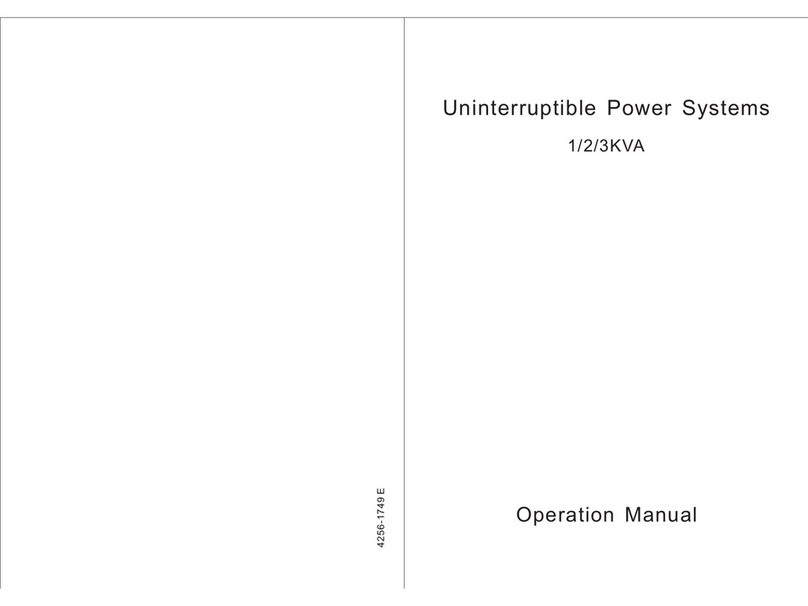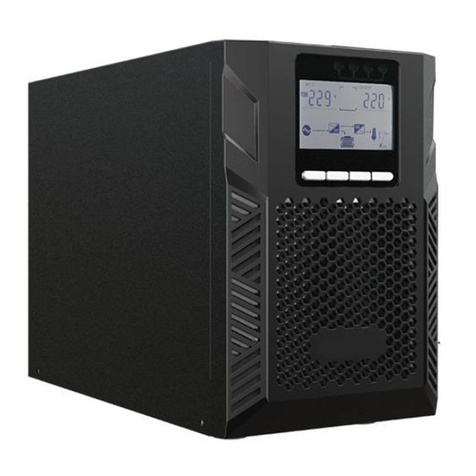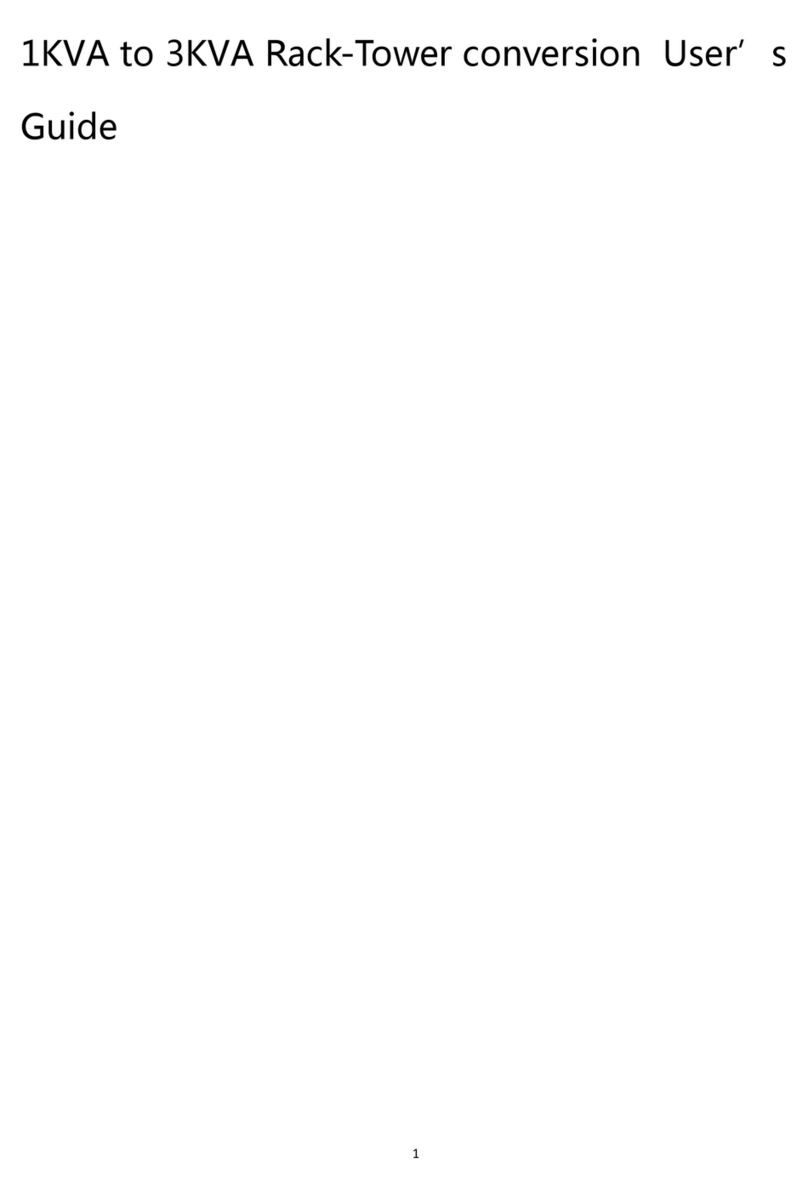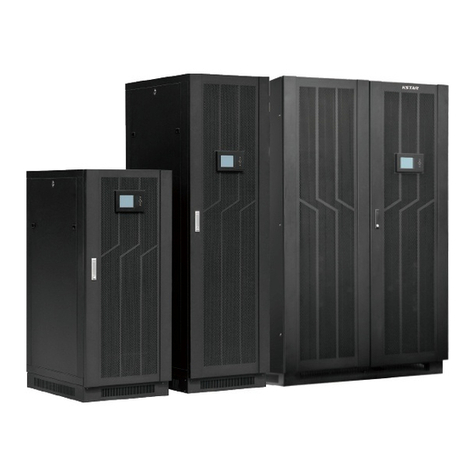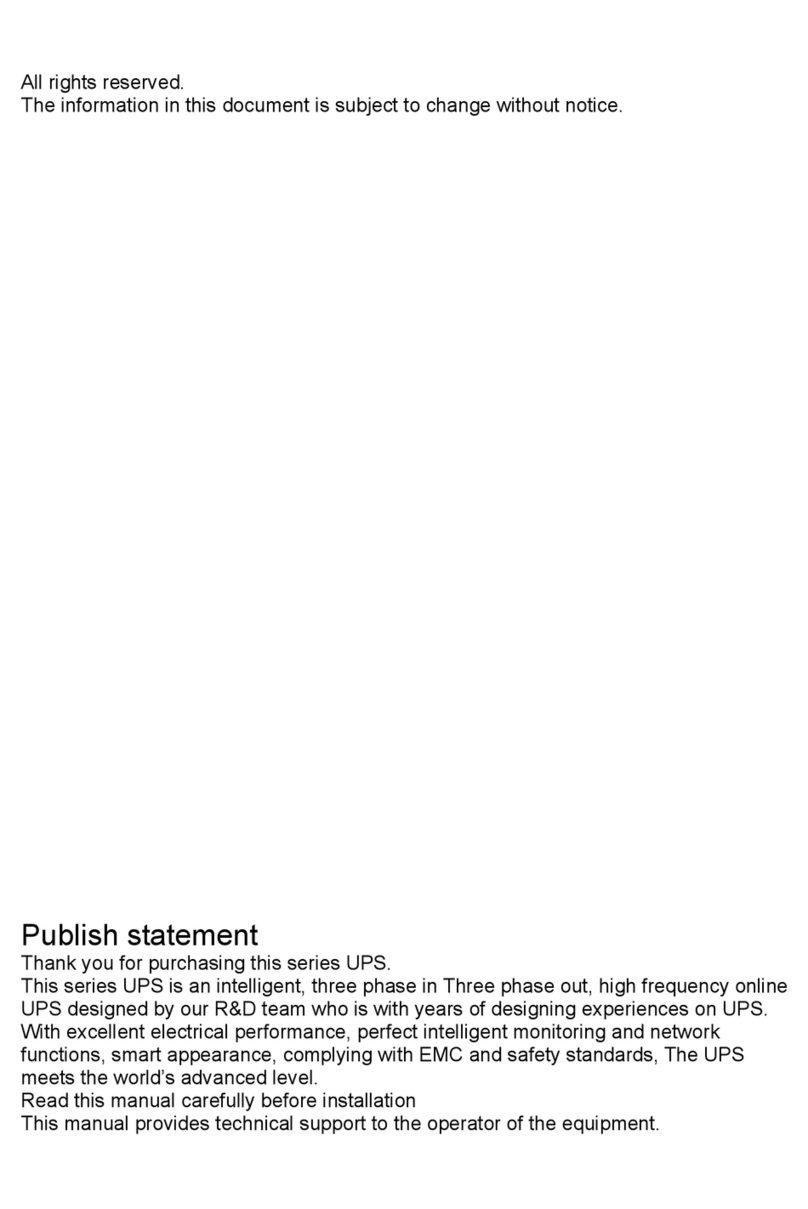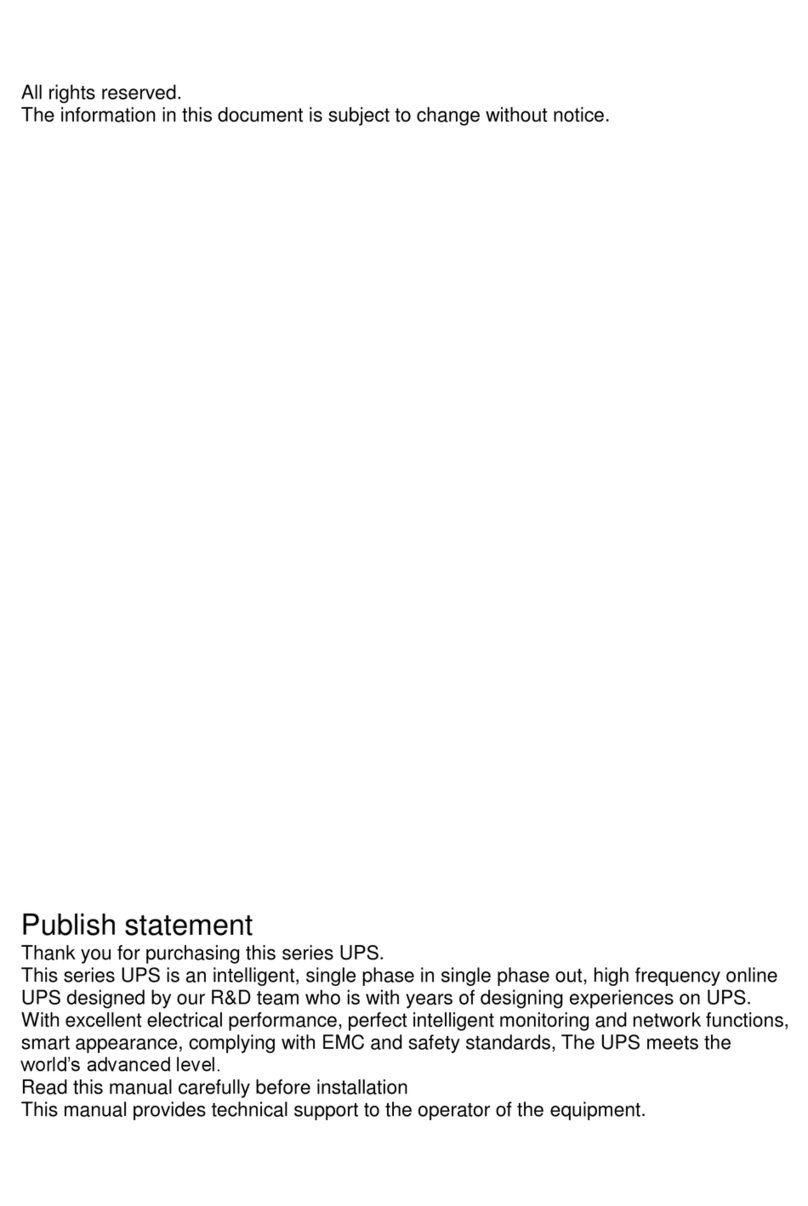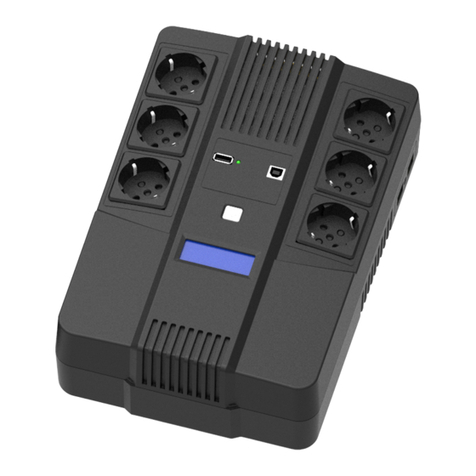
3
2.Main Features
2.1 Summarization
This series UPS is a kind of three-in-single-out high frequency online UPS.
The UPS can solve most of the power supply problems, such as blackout, over-voltage,
under-voltage, voltage sudden drop, oscillating of decreasing extent, high voltage pulse, voltage
fluctuation, surge, inrush current, harmonic distortion (THD), noise interference, frequency
fluctuation, etc..
This UPS can be applied to different applications from computer device, automatic equipment,
communication system to industry equipment.
2.2 Functions and Features
◆Digital Control
This series UPS is controlled by Digital Signal Processor (DSP); enhance, it increases
reliability, performance, self-protection, and self-diagnostics and so on.
◆Battery Configurable
From 16 blocks to 20 blocks, the battery voltage of this series UPS can be configured at 16
blocks, 18 blocks or 20 blocks according to your convenience.
Optional: from 32 blocks to 40 blocks, the battery voltage of this series UPS can be configured
at 32 blocks, 34 blocks, 36 blocks, 38 blocks or 40 blocks according to your convenience.
◆Charging Current is configurable
Via setting tool, the user may set the capacity of the batteries as well as reasonable charging
current as well as maximum charging current. Constant voltage mode, constant current mode or
floating mode can be switched automatically and smoothly.
◆Intelligent Charging Method
The series UPS adopts advanced three-stage charging method—
1st stage: high current constant current charging
to guarantee to charge back to 90%;
2nd-stage: Constant Voltage
In order to vitalize battery and make sure batteries are fully charged
3rd stage: floating mode.
With this 3-stage charging method, it extends the life of the batteries and guarantees fast charging.
◆LCD Display
With LCD plus LED displays, the user may easily get UPS status and its operational
parameters, such as input/output voltage, frequency & load%, battery % and ambient
temperature, etc...
◆Intelligent Monitoring Function
Via optional SNMP Card, you may remotely control and monitor the UPS.
◆EPO Function
The series UPS may be completely shut off when the EPO is pressed. REPO function
(Remote EPO) is also available in this series UPS.


